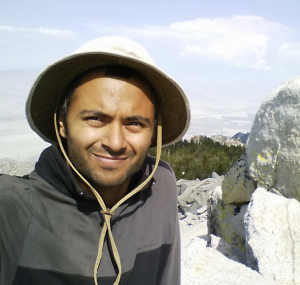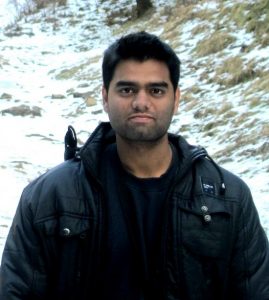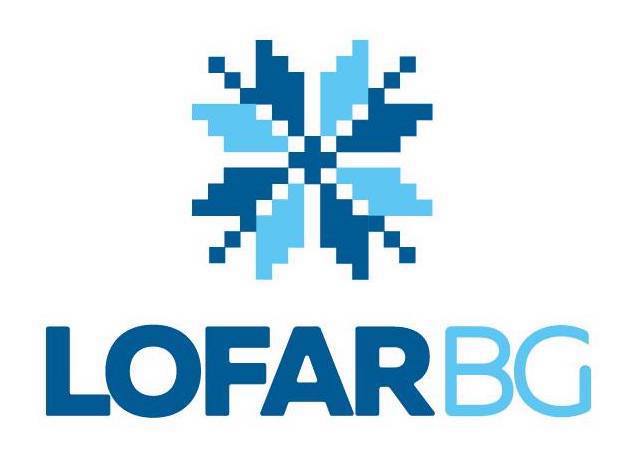The STELLAR Seminar series highlights relevant research by STELLAR team members and their collaborators.
The third STELLAR seminar lecture will be by Dr. Harish Vedantham of ASTRON. His online seminar will be held on Tuesday, November 2 2021, at 15:00h CET, over Zoom (connection details below).

“Radio flashes from plasma storms around exoplanets”
Dr. Harish Vedantham
ASTRON, The Netherlands Institute of Radio Astronomy
The full seminar talk is available online.
Abstract:
Low frequency (< few hundred MHz) radio observations uniquely trace several processes that determine the habitability of exoplanets. Coronal plasma ejections that erode planetary atmospheres can be detected using the characteristic radio bursts they emit. Planetary magnetic fields that largely determine the planetary defence against the stellar onslaught can also be detected using radio observations. Radio observations of such phenomena in the solar system are commonplace. I will argue that the extrasolar frontier is now also within reach thanks to powerful new low-frequency telescopes such as LOFAR. I will describe an observational program using LOFAR to systematically survey the low-frequency radio sky for stellar, brown dwarf and exoplanetary emission with unprecedented sensitivities reaching a fraction of a milliJansky at 150 MHz and below. I will present some early successes of this campaign including (a) the discovery of evidence for magnetic interaction between a star and its planet and (b) the discovery of a cold brown dwarf directly in the radio band using its magnetospheric emissions. I will end with an outlook for harnessing radio astronomy’s unique diagnostic capabilities to advance exoplanet science.
About Dr. Vedantham: Staff astronomer, ASTRON & Visiting Assistant Prof. at Univ of Groningen (2018-current); Recipient of Dutch Vidi grant for 2021.
Past affiliations: Millikan fellow at Caltech (2015-2018), PhD University of Groningen (2011-2015).
The second lecture in our STELLAR Seminar series will be by Dr. Rohit Sharma of Fachhochschule Nordwestschweiz. His online seminar will be held on Thursday, September 16 2021, at 13:00h CET, over Zoom (connection details below).

“Characterisation of weak transient meterwave solar emissions”
Dr. Rohit Sharma
Fachhochschule Nordwestschweiz FHNW, Switzerland
The full seminar talk is available online.
Abstract:
The coronal plasma resides in the meanders of the magnetic fields rooted in the photosphere. The dynamic processes taking place at the solar surface naturally influence the coronal magnetic fields. In X-rays and extreme-UV bands, this manifests itself in a broad range of phenomena ranging from the most energetic flares to those at the detection threshold of even the most capable instrumentation. Constant fluctuations of energetically weak flares permeate even the quiet corona, often referred to as nanoflares. As coherent emission is involved, even the weaker solar flares can produce disproportionately strong signatures at metre waves. Despite this advantage, the amplitude of these signatures is only a few per cent of the background. The propagation effects by the radio waves through the inhomogeneous turbulent coronal plasma further complicates the scenario. Images from the Murchison Widefield Array (MWA) now represent the state-of-the-art solar radio imaging at meterwaves. They have been used to probe the low-level variability in the background solar emission. The idea of differential radio imaging using visibility subtraction has been used successfully by other instruments. Here we present the first application of this technique to the MWA solar data. We find many interesting results, including the presence of numerous weak compact sources. Most of these are associated with regions bright in EUV and are about two orders of magnitude fainter than the million K background.
The first lecturer in our STELLAR Seminar series will be Dr. Peijin Zhang from the University of Science and Technology of China. His online seminar will be held on Tuesday, August 17 2021, at 15:00h CET, over Zoom (connection details below).

“Observation, Modeling, and Wave-Propagation Simulations on the Source of Solar Radio Bursts”
Dr. Peijin Zhang
University of Science and Technology of China
The full seminar talk is available online.
Abstract:
The observation of solar radio burst provides a unique perspective to diagnose the energetic electrons and the background plasma. However, due to the lack of in-situ observations, the specific details of the emission mechanism and wave propagation effect of solar radio bursts remain unclear. To get further understanding of the relationship between energetic electrons and features of observed radio burst, it requires more data analyses, high-resolution observations, and simulations on the influences of wave propagation effect, so as to infer the radiation mechanism and the physical process happening in the source region. In this talk, I will present my PhD work results, focusing on obtaining more information from the observation of solar radio bursts. It will include the following parts:
(1) Statistical and forward modeling of Type III radio bursts
(2) On the duration of solar radio bursts
(3) Imaging spectroscopy of fine structures
(4) Wave propagation simulation

The STELLAR project has received funding from the European Union’s Horizon 2020 research and innovation programme under grant agreement No 952439. It is coordinated by the Institute of Astronomy, Bulgarian Academy of Sciences.

